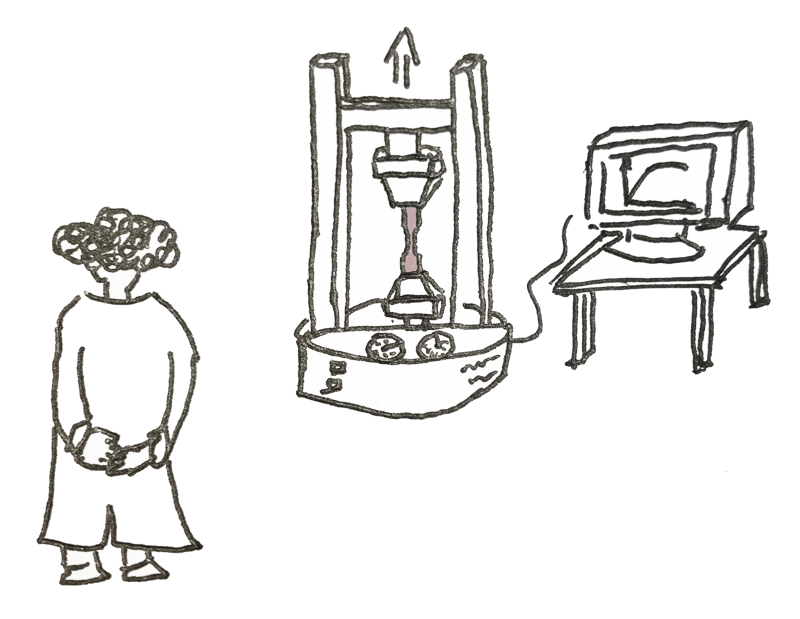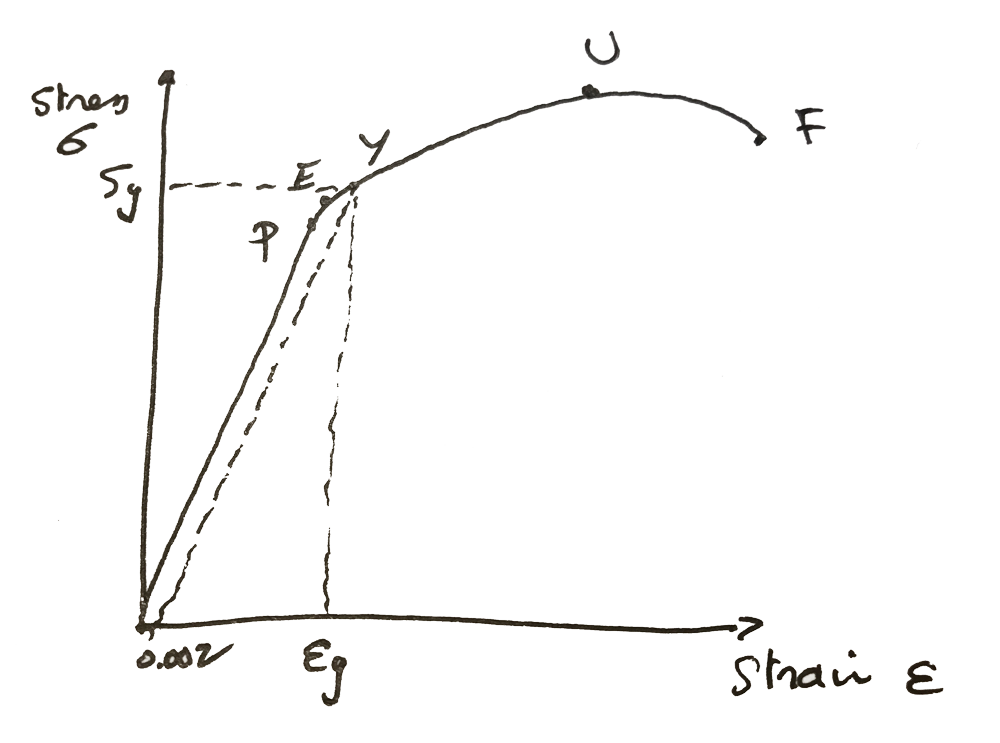This article talks explains the concept of safety factor and how it is calculated. It’s a fundamental notion that every mechanical engineer have to understand well.
How do I know if the design of my part is « safe » enough?
That’s a difficult question that many designers asked themselves.
One of the potential answers involves the measure of the safety factor.
For certain people, this notion is still not well understood, so I decided to write about it!
Important note: This article talks mainly about “stress-based” safety factors, but you should know that there are different definitions of “safety factor” margins, which are not all necessarily related to the state of stress. Additionally, stress definitions can vary… there is Von Mises Stress, but also Tresca, etc…. (Thanks to Boyd McKay for his contribution in improving that article by mentioning those)
Getting safe designs
First of all, I think it is not too much to remind that one of the purpose of simulation is to get safe designs…
When a part fails, it involves of course a risk for the life of people, but also a huge financial loss for the company who created this part (just think about the explosive Samsung batteries and you will understand what I am talking about)
FEA simulation helps to understands why a design fails, where it failed and how to improve it.
That’s why FEA is so important for companies who design products.
To assess the safety of a design, designers need a simple factor which will help in understanding if a design is safe enough.
This factor is called the safety factor.
How is the safety factor calculated
The definition of the safety factor is simple. It is defined as the ratio between the strength of the material and the maximum stress in the part.

When the stress in a specific position becomes superior to the strength of the material, the safety factor ratio becomes inferior to 1, this when there is danger
What it tells us basically is that in a specific area of the model, the stress is higher than the strength the material can bear.

When the stress in the model remains much inferior to the strength of the material, the safety factor stays superior to 1 and the model is « safe ».
Keep in mind that if the safety factor is way superior to 1 everywhere in your model, this is also indicating that your part may be over-engineered. In this case, this is not desirable either, because you are just wasting material resources and increasing the cost.
Now, let’s talk about the 2 important values that you need to calculate this safety factor: Stress and Strength
What is stress ?
If you still have some doubts about that, no shame, it’s not a concept easy to grasp for beginners, but it is an essential one.
In short, stress is a value that mesure the inner pressure inside a solid which is cause by an external loading. If stress is too high inside a part, the part may fail.
The notion of stress is not so different with what we experience everyday at work… When we receive a load of work, we become stressed. If we are too stressed, we may experience a nervous breakdown and many health problems.
If you want to understand more about stress and how stress is actually calculated, I wrote a full article about that few months ago.
Read the article: What is stress
What is the strength of a material?
Stress and Strength are different and that’s where many people don’t get it.
Stress in a body is always a function of the applied loading and cross-section, whereas strength is an inherent property of the body’s material/ manufacturing process.
Strength is obtained similarly to other material properties, by doing for example a standard tensile test which subjects a sample bar to uniaxial stress. Then we can draw the material stress-strain curve by extracting the deformation data and plotting it in function of the load data.

Note that if you need some high accuracy, the test should be performed under conditions similar to the operating conditions of the part or the system (Temperature, strain rate, material grain, flow direction,…)
There are several important points to understand on this curve:
- The point P is the proportional limit, it limits the portion of the curve which governed by Hooke’s law
- The point E is the elastic limit. The material will continue to behave elastically up to point E, but stress and strain won’t be proportional anymore.
- The point Y is the yield point which corresponds to the yield strength of the material
- The point U indicates the maximum stress that can be achieved by the material. It corresponds to its ultimate or tensile strength.
- The point F is the fracture point.
Note that the points E and Y may coincide for some types of materials such as ferrous materials.
The yield point is not necessarily very clear, and it is generally obtained by an offset method:
Y is considered to be the intersection of an offset line, parallel to the linear portion of the stress-strain curve typically at 0.002 axial strain, and the plastic portion of the curve.
As you read, there are several material strength values: the yield strength, the ultimate strength and the fracture strength.
The safety factor is calculated with the yield strength so this is the parameter you need to know in priority.
Is this ratio a perfect indicator of a model safety?
I’d like to say that nothing is really perfect… As engineers, we have to learn to live with errors ;-)
Errors are everywhere:
- In the testing process that will provide you with the stress-strain material curve and the yield strength used to calculate the safety factor
- In the FE model that you build, it is probable that the boundary conditions and/or the meshing will cause a certain amount of error
- In the FEA software itself and the algorithms it uses, error is included (and hopefully controlled)
That’s why it’s always better to consider a safety factor which is not exactly 1, but maybe a little higher (2-3) depending on the hypothesis you take.
Additional note: The safety factor only describe material failure. In some designs, it is sufficient, but if you are designing a slender element some form of stability failure (i.e. buckling) may occur. Such safety factor do not take that into account since buckling can happen when stress is much smaller than limit stress of the material.
Comments worth mentionning from other FEA specialists
David Backhouse (Backhouse Technical Service LTD):
There is no set ‘safety factor’ as such. That is too simple a concept as there are many modes of failure. There are instances, for example, where stresses above yield are acceptable. You should really refer to the appropriate design standard for the structure, its use, and the classification of the stresses.
Karl Van Aswegen (Fluid Codes FZ LLE):
Safety Factors are not necessarily max stress/yield. Many times the industry you work in will dictate how you calculate design safety factors. More often than not fatigue is your biggest problem not yield.
Eric Lee (Austal):
In my opinion, safety factors are really only important in certain cases. In the industries that I’ve worked in (shipbuilding/offshore) safety factors are hardly the criteria we work to. We do have our allowable stresses, but safety factors never govern because there are always stress concentrations that are allowed to be waived because of the geometry, mesh size/aspect ratio, loading conditions, etc.
The only real place where safety factors absolutely drive the design is in lifting applications where you need a SF of 3 to 5. That said, it’s always a good thing to check, especially if you’re doing approximate hand calculations.
Jeff Finlayson (Boeing):
It is best to understand what a safety factor really is and understand what the requirements actually state.
In general, the ultimate safety factor is Ultimate load/applied load, and for yield SF is Yield load/applied load. Stresses may not be linearly related to the load due to local plasticity effects. Static preloads may receive no safety or a small one depending on requirements for uncertainties.
Vlad Kerchman (Independent Consultant):
In evaluating the possible ultimate loads/stresses people frequently look for quasi-static or steady-state conditions with extreme overload or bias. In real service/ life it typically happens under drastic change of loading – in dynamics, say, vehicle impacting a road obstacle or bump, or seismic loading on a structure, explosion, etc.. That’s where FEA can really help to replace difficult and expensive testing.
Neil Grant (Allen-Vanguard):
I think safety factor needs to be expressed with respect to something. For a one time use, it can be with respect to ultimate strength. Similarly, for many cycles, it can be expressed with respect to the fatigue limit strength.
////////////////////////////////////////////////////////////////////////////////////
Do you like this article? Was it useful for you to understand the concept of safety factor?
If it was useful and you think that others can benefit for it, can I ask you to share it with your network on Linkedin or facebook?
Also, don’t hesitate to write me a comment, so I know it was useful for you and let me know what else you would like to learn about more in details!
If you are a beginner in FEA simulation, read this article.


Excellent explanation. Thanks.
You’re welcome Abhinav! :)
nicely explained sir ,thank you
You’re welcome Sunil!
It very interesting and easy to understand. What your article do not touch enough is when we have overstressed area in the part. How big those can be and element can be cosiderred safe? How big the stress can be in those areas but the part can still considered safe? In the FEA analysis it is very rare the situation when the entire part stress is below yielding point. This is the hardest part in analysis of the model, to know house far you can go and to keep the model in the safety limits.
Thank you for you article and a very nice Holidays.
Thanks for taking the time to posting those questions Dragos! It would indeed be interesting to go further and talk about that as well… maybe in a next article ;-)
Superb
Can you touch on how safety factors are determined and how reliable they are ? What work is done before we calculate stress expected / maximum stress ? In terms of determining material properties, are book values used ? These can vary a lot. What if failure is simply not an option, how to we be 100% accurate on material properties ? Instead of using book values ? How does all this affect how reliable safety factors are? How do safety factors include degrading of the material, possible overloading, miss use, there are many factors which make safety factors unreliable.
The stress and strain must be of the same type and unit and must be referring to the same (critical) point.
You’re totally right. I just didn’t want to complexify the explanation, but there are more factors to take in account!
Nice article in simple language! Choosing the right safety factor depends on application of the part which is being analysed and the impact that failure creates in the field. It would be nice to give more info about industry practices and standards we usually follow in choosing safety factor. Thank you in advance!
Nice and informative article and also comments of experts.
Thank you so much. God bless you
Hey I am designing a Bicycle Trailer and I need to select a proper Factor of safety according to any Standard, I am in Germany So you know which standard I should follow and If you have the link for it I will be Glad. Thanks in advance
Thanks Cyprien
Very nice way of explaining
Excellent
Excuse me, Mr. Cyprien. Is the Safety factor true with the compressive cases? For example, when I carry out an experiment about compressive of connecting rod in the engine, I want to evaluate its safety, so can I use the Safety factor with custom value in Stress limit type? Thank you
It depends on your system. Some materials do not behave the same in tension and compression (like concrete) so you have to be careful with that. Also make sure your system isn’t failing for another reason like buckling for example.
When a part fails, it involves of course a risk for the life of people, but also a huge financial loss for the company who created this part (just think about the explosive Samsung batteries and you will understand what I am talking about) Keep in mind that if the safety factor is way superior to 1 everywhere in your model, this is also indicating that your part may be over-engineered. In this case, this is not desirable either, because you are just wasting material resources and increasing the cost.
Excellent work, what is your recommendation for safety factors for calculating strength in facilities for a person such as a leg prosthesis
I will share the artical to my students
thank you